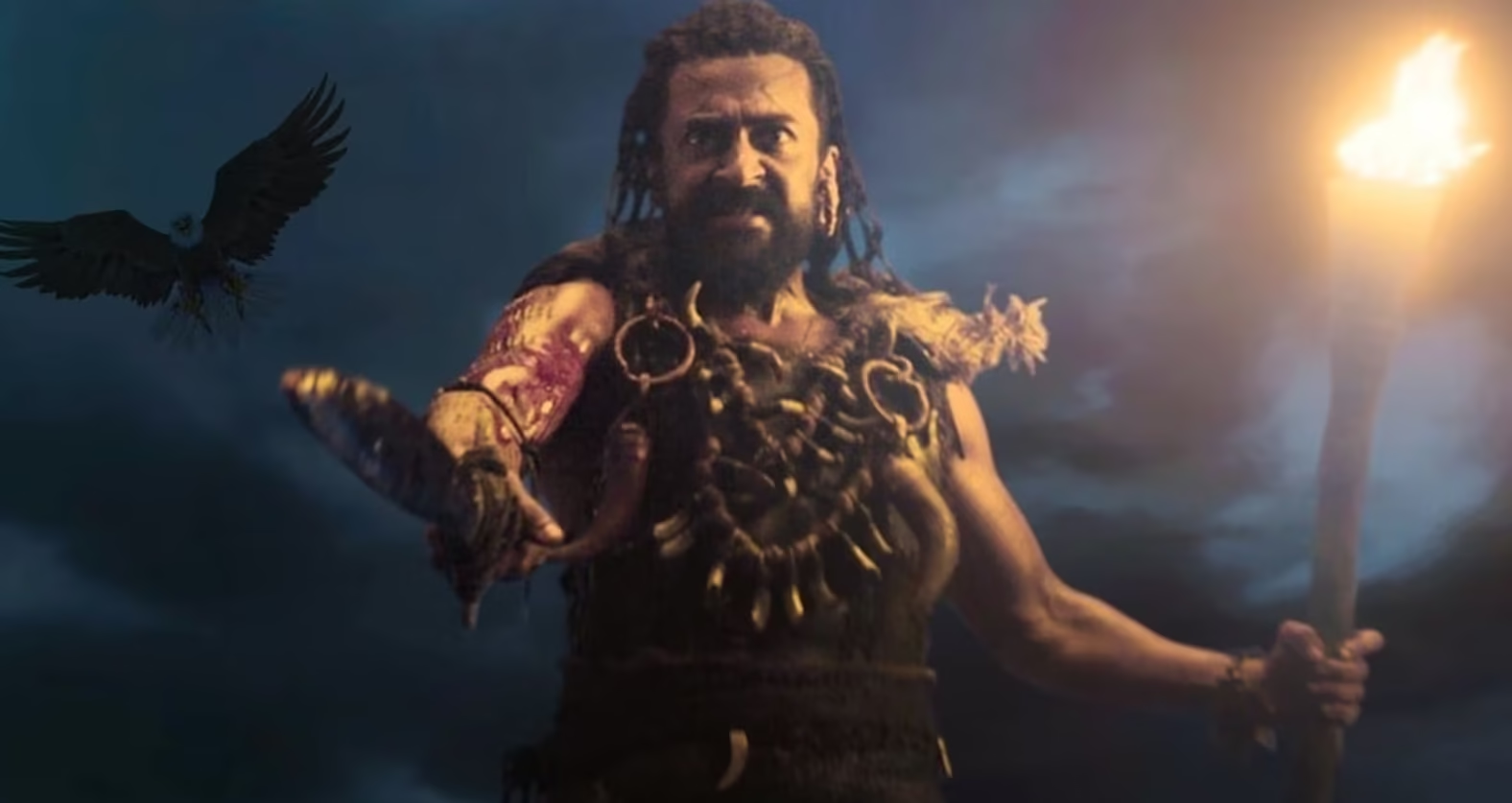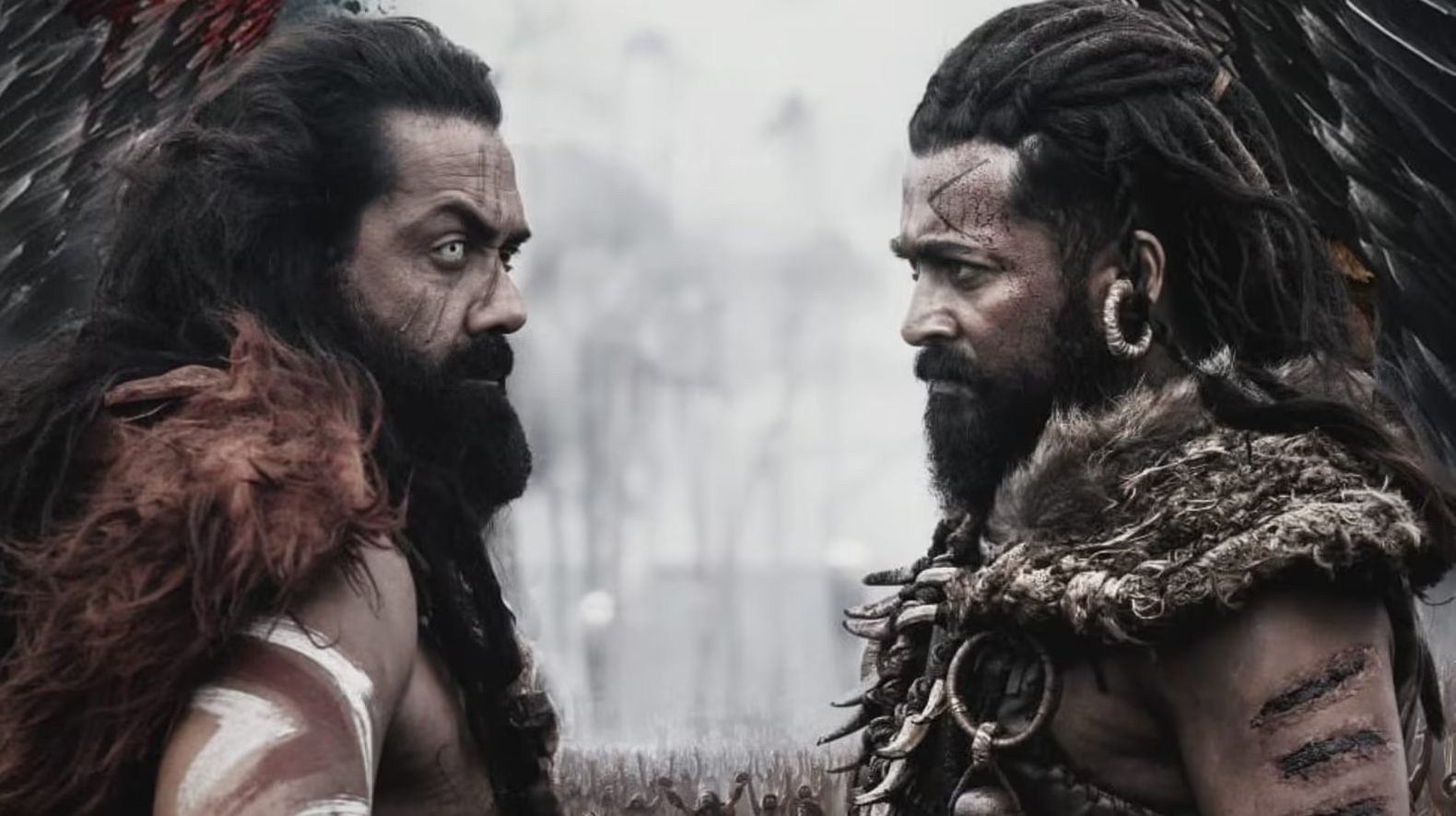Suriya-Siva’s Kanguva Exposes Flaws in Big-Budget Cinema and Shifts Perceptions of GOAT and Devara
Director Siva’s much-anticipated film, Kanguva, starring Suriya, has finally hit theaters, and its reception has been anything but ordinary. The film’s attempt to blend time travel, poetic narration, and visual grandeur has sparked intense discussions among viewers. Surprisingly, Kanguva has also forced a reassessment of earlier judgments against films like The Greatest of All Time (GOAT) starring Vijay and Devara: Part 1 with Jr NTR. The realization? Perhaps these films weren’t as dreadful as they initially seemed.
A Lofty Concept Falls Flat
At its core, Kanguva is built on a timeless concept: the intertwining of destinies across centuries. The narrative oscillates between the 1070s and 2024, following two characters connected by a promise that transcends time. This premise has been explored in films like Madhumati, Om Shanti Om, and Magadheera, to varying degrees of success. Unfortunately, Kanguva fails to capitalize on its potential due to disjointed storytelling and a lack of cohesion.
Also Read: Trucking Injuries Attorney Houston: Seeking Justice After an Accident
The film begins with a promising sequence set in 1070, immersing viewers in the world of Perumaachi, an island rich in culture and tribal traditions. However, as the story transitions to the modern era, it becomes apparent that the creators exhausted their creative energy on the historical portions. The futuristic narrative in 2024 feels like an afterthought, riddled with clichés and uninspired ideas.
A Patchwork of Borrowed Elements
One glaring issue is the film’s reliance on tropes borrowed from other popular works. For instance, the character Zeta—a boy with telekinetic abilities escaping from a Russian biomedical facility—feels like a poorly disguised version of Eleven from Netflix’s Stranger Things. This blatant replication, without any effort to adapt or innovate, dilutes the film’s originality.
Additionally, the screenplay by Siva and Adi Narayana is peppered with juvenile humor and cringe-worthy moments. Suriya’s character Francis Theodore, introduced as a bounty hunter, receives an unnecessarily exaggerated reveal that feels more like a parody than a dramatic moment. His ex-girlfriend Angelina (Disha Patani) and her sidekick Accelerator (Redin Kingsley) contribute little to the narrative apart from forced comedic relief.
Visual Extravaganza Without Substance
Kanguva boasts a massive budget, and the filmmakers have spared no expense in crafting elaborate visuals. The 1070s sequences, designed by production designer Milan, showcase a meticulously detailed world, rich in cultural textures. However, this visual grandeur is undermined by the inconsistent tone and jarring shifts in the narrative.
For example, the film’s first act is drenched in psychedelic colors and fluorescent hues, creating a disorienting experience for viewers. Even the musical sequences, such as the song “YOLO,” fail to add depth to the story. Instead of showcasing character growth or advancing the plot, they feel like expensive, overproduced distractions.
A Missed Opportunity for Character Development
Despite Suriya’s dual roles as Kanguva and Francis Theodore, the film fails to give either character substantial depth. Kanguva, the son of Perumaachi’s chieftain Senthee, is portrayed as a symbol of righteousness and compassion, but his arc remains shallow. Similarly, the love story between Francis and Angelina lacks chemistry, making their interactions feel forced and unconvincing.
The supporting cast fares no better. Characters like Senthee and Selumaara (Karunas) are underdeveloped, while antagonists like Udhiran (Bobby Deol) and his sons are reduced to one-dimensional villains. This lack of meaningful characterisation diminishes the emotional impact of the story.
Problematic Representation of Tribals
One of the film’s most troubling aspects is its portrayal of tribal communities. While the island of Perumaachi is depicted as a noble land, the tribals are largely treated as a faceless collective. Apart from Kanguva, the individuals are stripped of their identities and reduced to stereotypes. This dehumanization perpetuates a long-standing issue in mainstream cinema, where indigenous people are often either ridiculed or portrayed as primitive and savage.
Moreover, the tagline “Awaken your tribal instincts,” used in the film’s promotions, raises questions about the narrative’s intentions. Instead of celebrating the rich cultural heritage of tribal communities, the film falls into the trap of exoticizing and oversimplifying their lives.
Comparisons with Other Big-Budget Films
Kanguva inadvertently highlights the pitfalls of modern big-budget cinema. Its failure to balance style and substance echoes criticisms of other high-profile films like Indian 2. In fact, Kanguva shares several flaws with S Shankar’s Indian 2, including poor CGI, lackluster humor, and a weak narrative structure.
Also Read: Premier Houston Semi Truck Accident Attorney
This revelation has softened earlier critiques of films like GOAT and Devara. While these movies were far from perfect, their shortcomings seem minor in comparison to the glaring missteps in Kanguva. For instance, Vijay’s introduction in GOAT may have been underwhelming, but it didn’t insult viewers’ intelligence like Francis Theodore’s over-the-top debut in Kanguva.
Lessons to Learn
Kanguva serves as a cautionary tale for filmmakers attempting ambitious projects. Visual spectacle alone cannot compensate for weak storytelling and poorly developed characters. A coherent narrative, coupled with nuanced characterisation, is essential to creating a truly engaging cinematic experience.
Additionally, filmmakers must exercise greater sensitivity when depicting marginalized communities. Treating tribal characters as mere props or stereotypes undermines their humanity and fails to do justice to their rich cultural histories.
Conclusion
Despite its grand ambitions, Kanguva falls short of delivering a memorable cinematic experience. While the historical portions offer glimpses of creativity and artistry, the overall execution is marred by lazy writing, excessive reliance on CGI, and a lack of emotional depth. The film’s inability to live up to its potential not only disappoints but also forces a reevaluation of earlier judgments against GOAT and Devara. In hindsight, those films, though flawed, at least tried to stay true to their narratives.
As audiences, we can only hope that future big-budget projects learn from Kanguva’s mistakes and strive for a more balanced approach—one that combines visual grandeur with meaningful storytelling.


